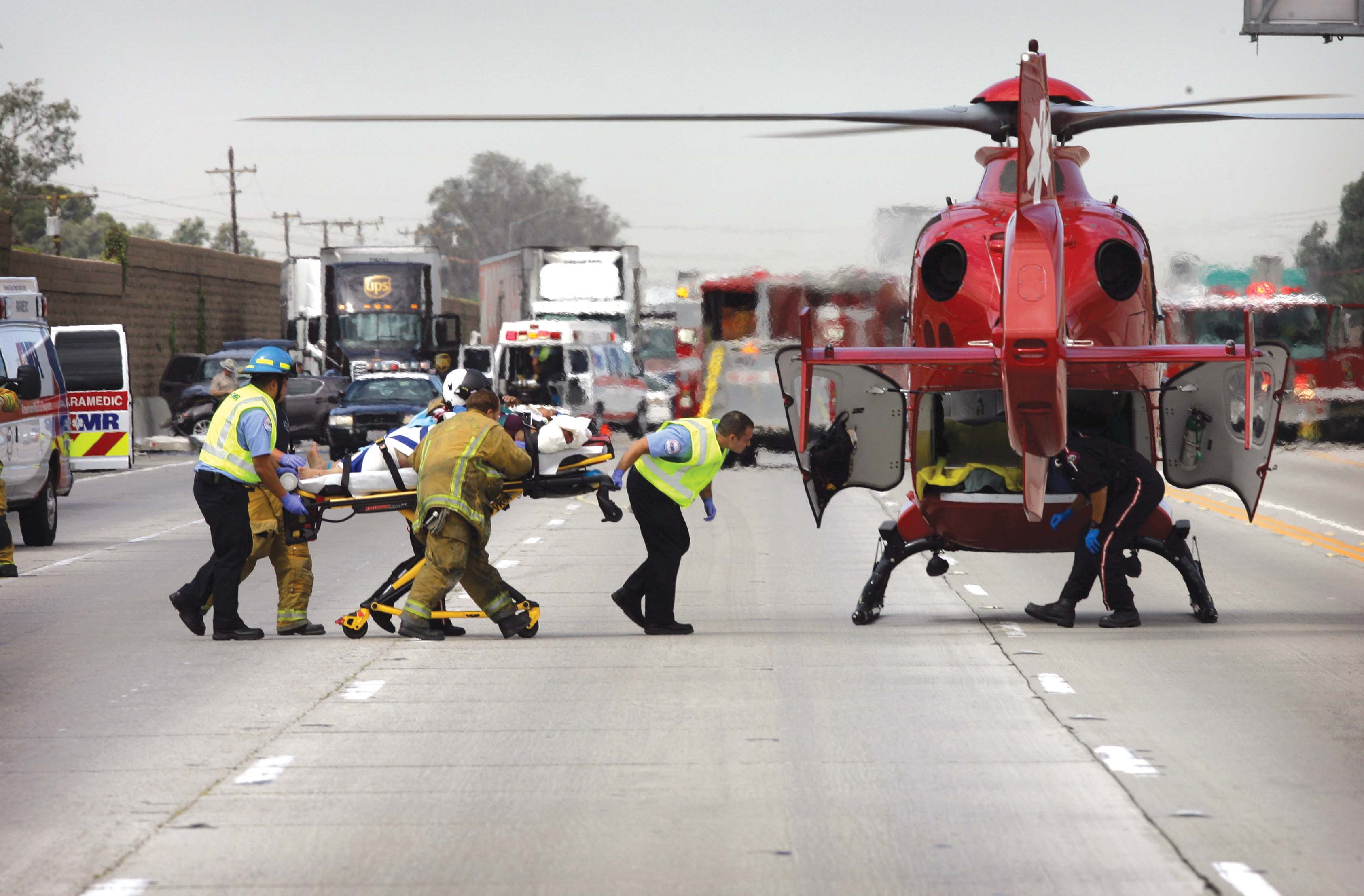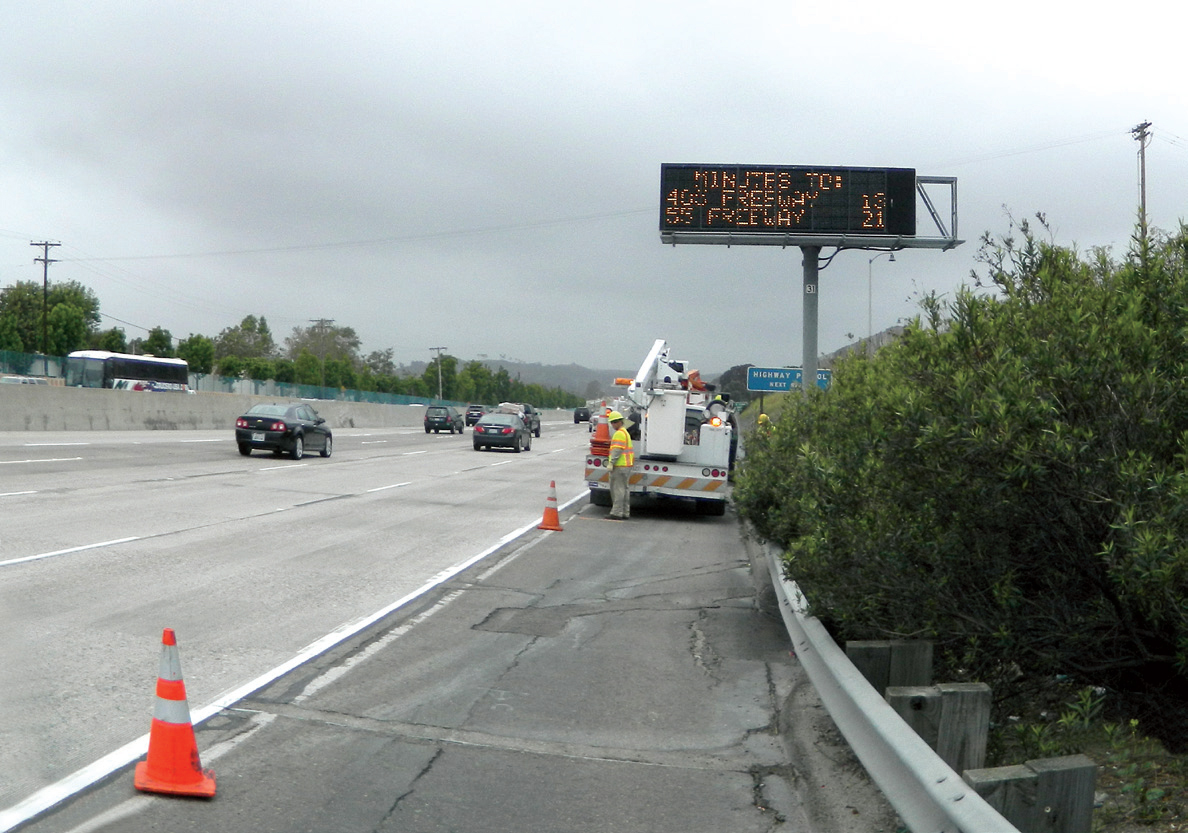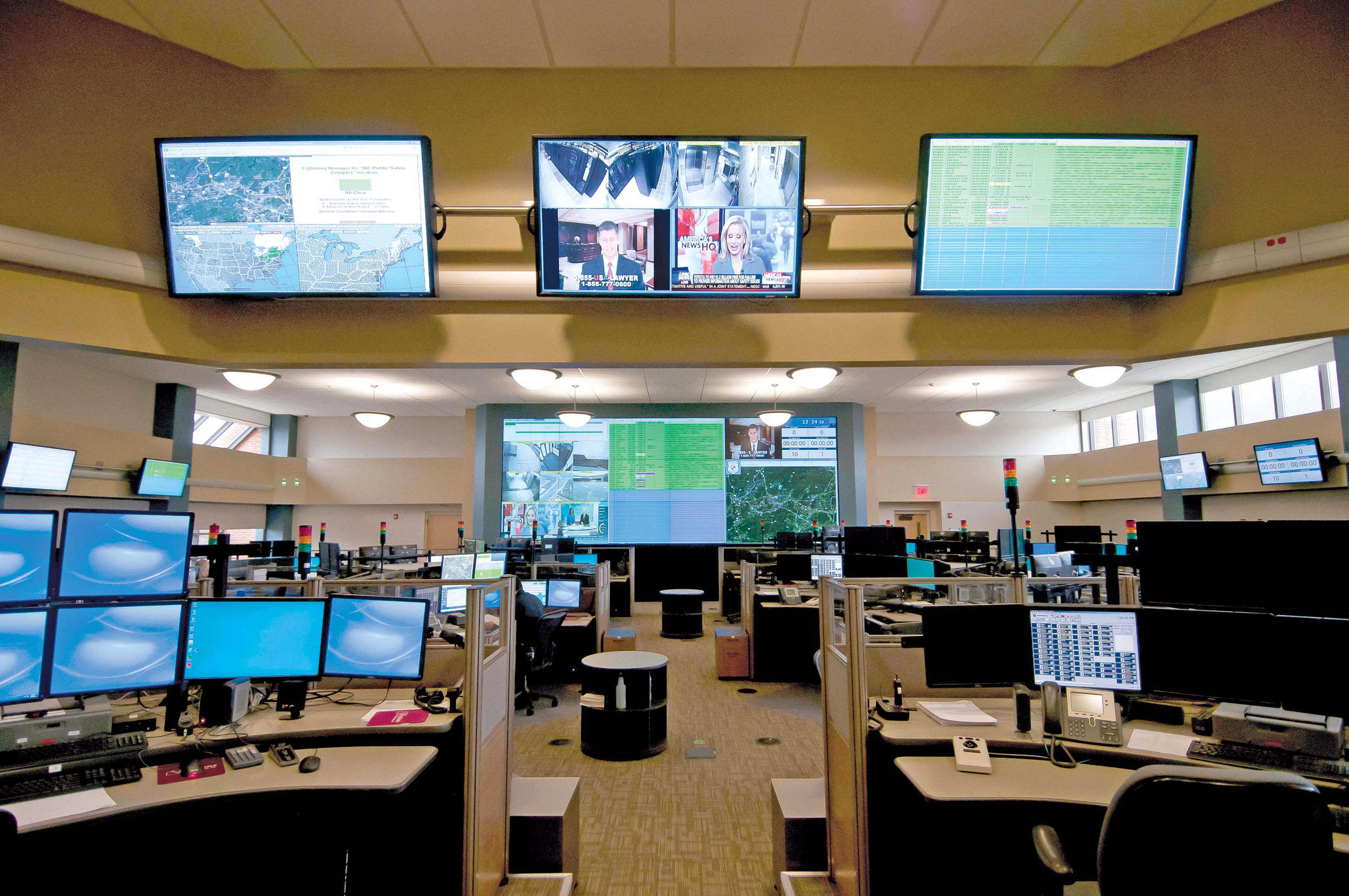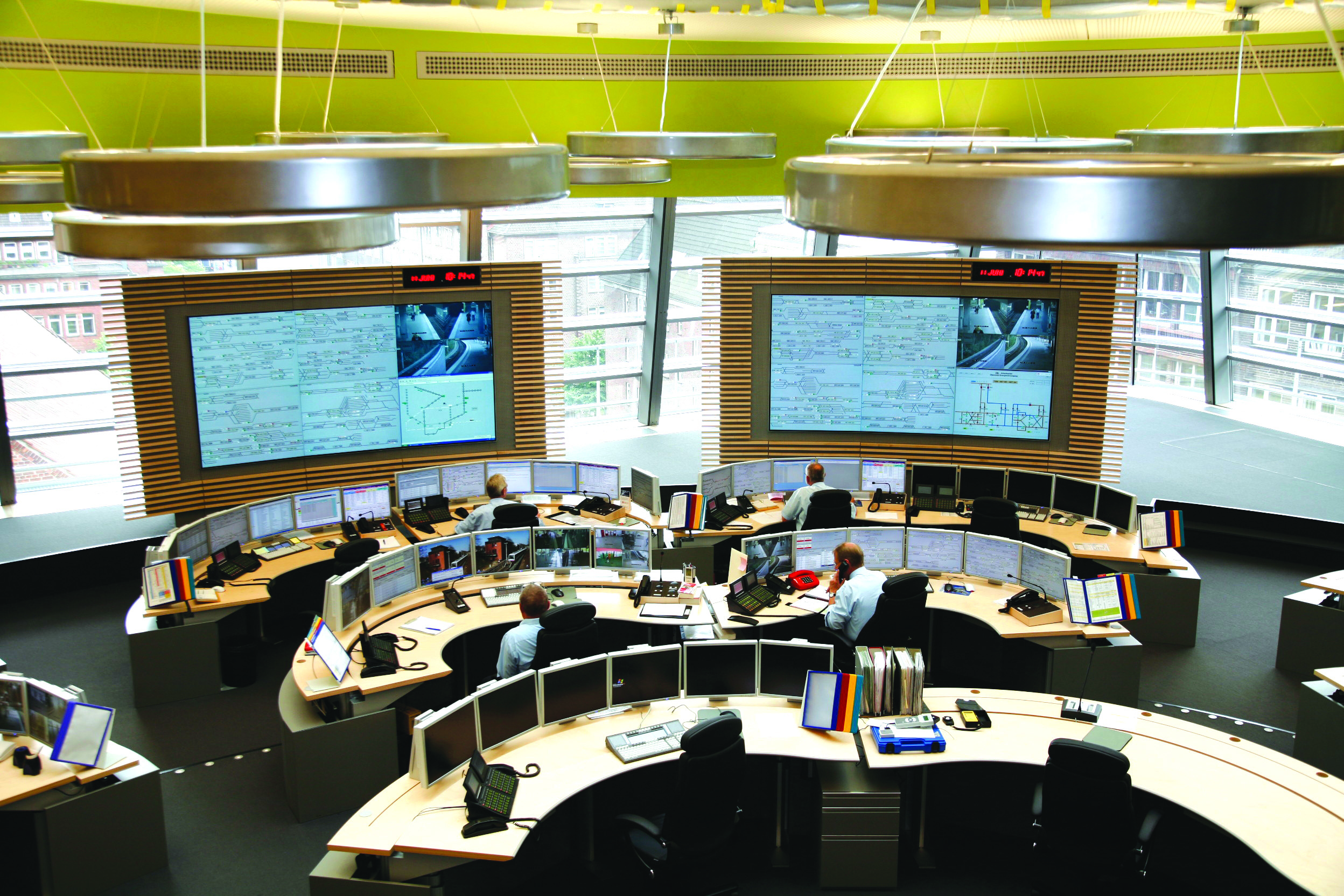
Interoperable CCTV can provide early warning of problems and help improve traffic management and incident response as Morteza Fahrtash and Carlos Ortiz explain.
California’s transportation system is one of the state’s defining features and
At a little over 2,000km² (800 square miles), Orange County forms one of Caltrans’ districts (District 12) and serves more than three million people in 34 cities and is connected to the adjoining districts by 17 state highway routes. District 12 maintains and operates 450km (280 miles) of three or four lane highway and 360km (226 miles) of full-time carpool lanes and is responsible for the design, construction, maintenance and operation of the highway system in the county. The existing Intelligent Transport Systems (ITS) architecture in the county has been developed over time through extensive planning and consensus-building among key stakeholders from across the region.
While the county as a whole possesses a mature ITS architecture, the ITS capabilities of each city varies based on size and needs with smaller cities typically relying on the county for traffic maintenance and operations while larger cities have considerable ITS infrastructure in place.
While every community has the means to deal with their own traffic problems, each is unaware of what is happening in adjacent communities and if an event in that neighbouring town will create a knock-on effect in their own area.
Essentially each community is ‘flying blind’ and reacting to whatever is thrown at them. With the distances between towns shrinking as communities grow and the improvement in transport links improve, there is a growing need for emergency service staff and those in traffic control rooms to be aware of what is happening outside their area of direct responsibility.
In response to these challenges a county-wide closed circuit television (CCTV) interoperability system has been proposed by Caltrans District 12 for the whole of Orange County.
Indeed back in 1992 when the ITS architecture for the region was first mapped out it envisioned the transition to an interoperable fibre-based wide area network of cameras that could be accessed and shared by a number of local agencies and cities.
The project will utilise the latest technology to gather and share CCTV video streams between participating local agencies to better monitor and manage congestion, verify incidents and improve travel times. Those viewing the live video from adjacent authorities will have no ability to control equipment outside their existing jurisdiction.
Fortunately this type of development had been foreseen by earlier administrations and Orange County’s existing regional ITS architecture is able to provide the necessary framework and a path to follow as CCTV interoperability is conceived, designed and deployed. The initial Project Study Report was developed by Caltrans staff as far back as 2005 but the project design and construction only really got underway in mid-2013 when funds became available through the State Highway Operation and Protection Program. The project was designed by the team comprising of members from RBF Consulting/Baker International, Caltrans and
Orange County is a highly urbanized region and relatively advanced in its transportation technology and has experienced success with many well-conceived ITS plans in the past. For this next step forward the plan is to integrate a private cloud-based system, into the current ITS architecture of the region so that participating agencies and cities can access vital transportation video information.
The larger cities with considerable ITS investments in place are actively promoting the creation of an interoperable system that would enhance inter-city integration and allow the sharing of transportation data. Currently, 12 of the 34 cities across the county have entered into agreements with Caltrans to share video from the CCTV traffic-surveillance cameras installed in their jurisdictions. The project will also allow participating cities to share CCTV images between each other.
Having increased reliance on Intelligent Transport Systems (ITS) to improve transportation operations, the proposed CCTV interoperability project represents a significant change in how the region will be able to manage congestion, verify incidents and improve travel times in the County’s roadway system. The integration and interoperability of CCTV streams offers an innovative solution to address the problems associated with high volume traffic in such a large geographic region. By promoting interagency coordination between Caltrans and participating agencies and cities, the project aims to enhance public safety and mobility.
By providing an interface so that necessary video streams can be disseminated district-wide to where it is needed, CCTV interoperability is expected to become an invaluable tool in the Orange County’s ITS architecture. Cities will have the ability to monitor the ebb and flow of traffic not only within their city limits but also in neighboring jurisdictions. When agencies can access more real time transportation information rapidly, incidents will be responded to more quickly and travel times will improve.
To achieve county-wide CCTV interoperability, the engineering and design team is proposing a consistent communication platform to facilitate data sharing.
The centerpiece of this platform is a private cloud-based system which will be scalable to an extent that it could receive the output from all 800 CCTV cameras installed across Orange County. Output from participating agencies’ CCTV cameras will not only be displayed directly in control rooms as happens at the moment, it will also be linked to the cloud via secure servers. These servers will all utilise the latest video compression standards to normalise incoming video streams before sending information to the cloud’s host provider via each agency’s secure web server.
This process will enable the system to deliver real-time video to the common platform. The appropriate agencies will have access to all of this real time information, which provides all participating agencies’ operators with situational awareness of events outside their immediate areas jurisdiction.
With a wider awareness of situation outside their borders, operators in the participating agencies can coordinate a timely response to any traffic and incident alerts.
RBF/Baker in partnership with Iteris is to provide project management, preliminary planning and engineering services as well as final engineering and construction support services.
In order to achieve the capability of sharing video images and streams it is anticipated that each participating agency will be require a secured video streaming server, normalised video streaming server and web server along with the associated hardware and software.
The proposed county-wide CCTV interoperability system will operate as an independent system and will not interfere with a city’s existing traffic management centre (TMC) equipment or operations. The Project encourages cities and various local agencies to enter into a Memorandum of Understanding with Caltrans whereby they agree to provide, at their discretion, live arterial/intersection CCTV traffic video streams.
It is a stipulation of the project proposal that participating agencies and cities shall maintain full control and operations of their CCTV cameras at all times. Agencies and cities also have the power to decide the number of CCTV camera locations to share and reserve the right to change, update, remove, and/or include additional locations during the three-year hosting period.
There will be no impact on participating agencies’ and cities’ budgets as the project will be fully funded by Caltrans for a three-year period. The interoperability system will be expandable and scalable system for future enhancements after the three-year hosting period.
In operation interoperable CCTV will play an integral role in allowing Caltrans to more broadly and effectively manage traffic congestion and incidents within District 12. The design has been completed and the project is currently ready to list for tender. Construction and implementation is scheduled to begin in early 2015.
• Morteza Fahrtash is TMC project manager for Caltrans District 12 and manager of the interoperable CCTV project. Carlos Ortiz is vice president of RBF Consulting/Baker International.












